Search
Remove Ads
Advertisement
Summary 
Loading AI-generated summary based on World History Encyclopedia articles ...
Search Results
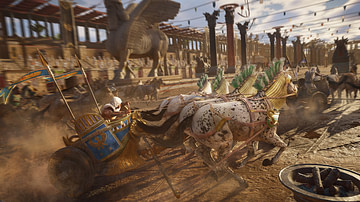
Definition
Circus Maximus
The Circus Maximus was a chariot racetrack in Rome constructed in the 6th century BCE. Used for other events such as the Roman Games and gladiator fights, it last hosted chariot races in the 6th century. Partially excavated in the 20th century...
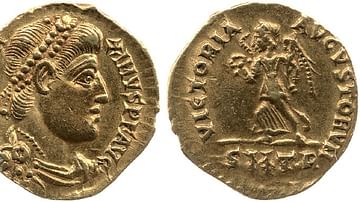
Definition
Magnus Maximus
Magnus Maximus (c. 355 - August 28, 388 CE) was a Roman usurper and Western Roman Emperor from 383-388 CE. He was a prominent general in the Roman army, particularly in the province of Britain. In 383 CE he usurped the Western throne, rebelling...
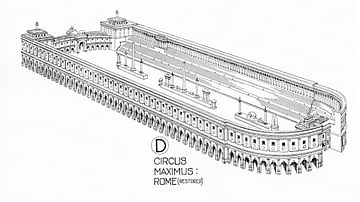
Image
Circus Maximus Reconstruction
An illustration of what the Circus Maximus chariot track of Rome might have looked like. The Circus Maximus dates back to the 6th century BCE but was at its most splendid in the 1st century CE when it had a capacity for 250,000 spectators...
![Circus Maximus [Present Day]](https://www.worldhistory.org/img/c/p/360x202/1276.jpg?v=1718938028)
Image
Circus Maximus [Present Day]
The view of Rome's Circus Maximus in the present day. The original circus lies 9 m below ground level and was first laid out in the 6th century BCE. The present site was remodelled in the 1930s CE to resemble the original.
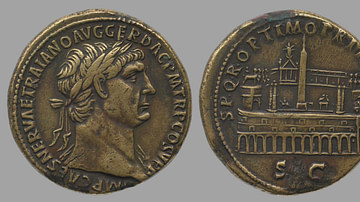
Image
Sestertius Commemorating Trajan's Rebuilding of the Circus Maximus
Sestertius commemorating Trajan's rebuilding of the Circus Maximus, showing the Arch of Titus (not to be confused with the Arch of Titus built over the Via Sacra), which looks down from the upper left, quadrigae (four-horse chariots) surmounting...
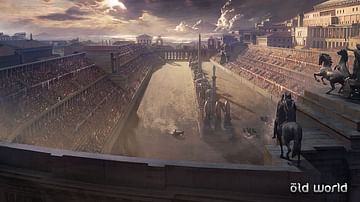
Image
The Circus Maximus in Rome
Artist's impression of the Circus Maximus in ancient Rome, with a chariot race going on.
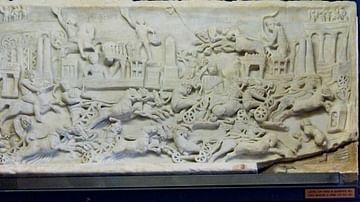
Image
Roman Quadriga Race in the Circus Maximus
A releif showing a quadriga race in the Cricus Maximus, Rome (2-3rd century); Trinci Palace, Foligno, Italy. The starting gates can be seen on the far left. The upper left-hand corner shows the magistrate who will begin the race by dropping...
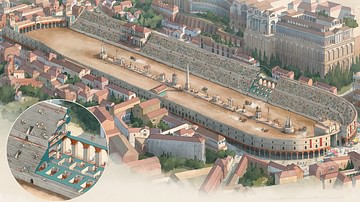
Image
Illustration of Circus Maximus, Rome
Illustration of the Circus Maximus in Rome, as it might have appeared in Antiquity by Rocío Espin. Courtesy of Ancient History Magazine / Karwansaray Publishers.
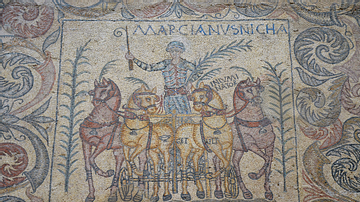
Article
Chariot Racing in Ancient Rome
Chariot racing was very big business in ancient Rome. There was a whole industry built around the factions, the four professional stables known by their team colour – Blue, Green, Red, and White –, providing all that was required for a race...
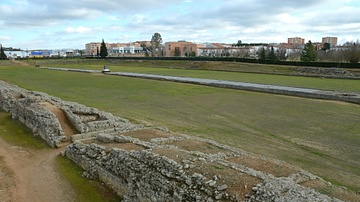
Image
Roman Circus of Mérida
The Roman circus of Augusta Emerita is a ruined Roman circus in Mérida (Spain). Inaugurated in the first quarter of the first century CE, it was used for chariot racing, and was modelled on the Circus Maximus in Rome. Measuring 440 metres...